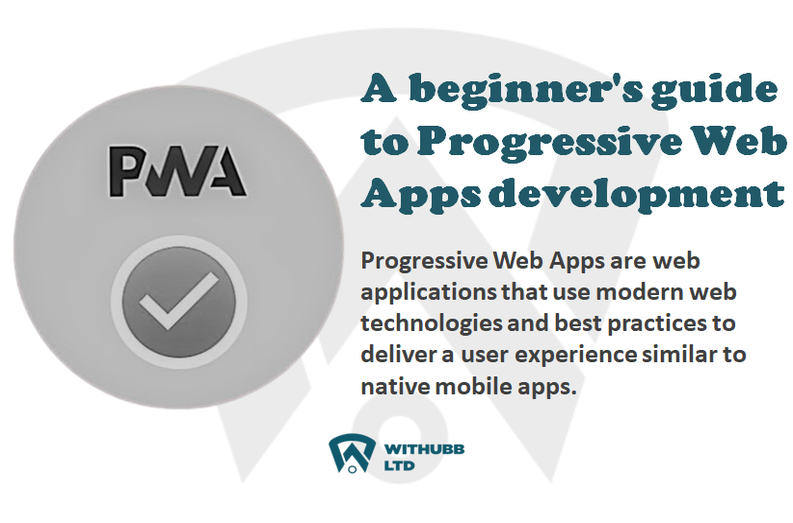Security Best practices In web development

Today we discuss key practices recommended by industry experts to mitigate common vulnerabilities and protect against malicious attacks. By implementing these best practices, developers can fortify their web applications against potential threats, ensuring the integrity, confidentiality, and availability of user data. Let's embark on this journey together to uncover the essential security measures that every web developer should prioritize.
Security Best practices In web development
1. Input Validation
Input validation is a critical security measure in web development that helps prevent malicious attacks such as SQL injection and cross-site scripting. By validating user inputs, developers can ensure that only safe and expected data is processed by the application. Failure to implement proper input validation can leave web applications vulnerable to various exploits, leading to data breaches and compromised system integrity.
Best Practices for Input Validation
To effectively validate user inputs, developers should utilize techniques such as white-listing, blacklisting, and input sanitization. White-listing involves specifying acceptable inputs, while blacklisting identifies and rejects known malicious inputs. Input sanitization removes potentially harmful characters from user inputs, reducing the risk of injection attacks. By combining these approaches, developers can create a robust input validation mechanism that protects against a wide range of security threats.
Implementing Client-Side and Server-Side Validation
It is essential to perform input validation both on the client side (in the user's browser) and the server side (on the web server). Client-side validation provides immediate feedback to users, enhancing the user experience and reducing the likelihood of submitting invalid data. However, client-side validation alone is not sufficient, as it can be bypassed by malicious users. Server-side validation acts as a final line of defense, ensuring that all inputs are thoroughly validated before processing.
Continuous Monitoring and Updating
Input validation is not a one-time task but an ongoing process that requires constant monitoring and updating. As new security threats emerge, developers must stay vigilant and adapt their validation techniques accordingly. Regularly reviewing and enhancing input validation rules can help strengthen the overall security posture of web applications, minimizing the risk of vulnerabilities and enhancing user trust in the system. By prioritizing input validation, developers can build a more secure and reliable web application for users to enjoy.
2. Output Encoding
When it comes to web development security, output encoding is a critical practice that helps prevent cross-site scripting (XSS) attacks and safeguard user data. By encoding output before displaying it on a web page, developers can ensure that any potentially malicious scripts are neutralized, protecting users from falling victim to XSS attacks. This simple yet effective measure can go a long way in enhancing the overall security of a web application.
To implement output encoding effectively, developers should prioritize the following best practices:- Utilize secure output encoding libraries and functions to sanitize user-generated content.
- Encode user inputs, such as form fields and search queries, before displaying them on the website.
- Regularly review and update encoding mechanisms to adapt to evolving security threats and vulnerabilities. By incorporating these practices into their development process, developers can create a robust defense against XSS attacks and uphold the confidentiality and integrity of user data.
Output encoding stands as a fundamental security measure that should not be overlooked. By proactively encoding output and fortifying against XSS vulnerabilities, developers can instill trust in their users and demonstrate a commitment to safeguarding sensitive information. With a focus on implementing secure coding practices, web developers can pave the way for a safer online experience for all users.
3. Authentication and Password Management
Authentication and password management stand as pillars of safeguarding user accounts and sensitive information. Implementing secure authentication mechanisms is paramount to verify the identity of users and prevent unauthorized access. Utilizing strong password management practices, such as enforcing complex password requirements and hashing passwords, adds an extra layer of protection against potential breaches.
Ensuring the confidentiality and integrity of user credentials is essential in maintaining trust and security within web applications. Employing multi-factor authentication can enhance security by requiring users to provide additional verification beyond just a password. Regularly updating and resetting passwords, along with educating users on password hygiene, can help mitigate the risk of password-related vulnerabilities.Effective password management also involves securely storing and transmitting user credentials to prevent unauthorized access. Utilizing encryption techniques to store passwords and transmitting them over secure channels can mitigate the risk of interception by malicious actors. Implementing password policies, such as password expiration and account lockout mechanisms, can further enhance the security posture of web applications.
4. Session Management
Sessions allow the server to maintain stateful information about a user's activities, such as login status and preferences, across multiple page requests. It is essential to implement robust session management practices to prevent session hijacking, unauthorized access, and other session-related vulnerabilities.
One key aspect of session management is the generation and handling of session identifiers. Session identifiers should be unique, unpredictable, and securely transmitted between the client and server. By using secure session identifiers, developers can mitigate the risk of session fixation attacks and unauthorized session access.
Implementing session expiration policies and secure cookie settings can help prevent session replay attacks and session fixation vulnerabilities. It is crucial to regularly review and update session management mechanisms to address any emerging threats and vulnerabilities.
Encrypting sensitive session data and limiting the scope of session variables can further enhance the security of user sessions and prevent data leakage.
Ensuring secure communication between the client and server during session management is paramount to protecting sensitive user information. Utilizing HTTPS and encryption protocols can safeguard session data from interception and tampering by malicious actors. By encrypting data in transit and implementing secure communication channels, developers can establish a secure and trustworthy environment for user sessions. Regular security assessments and penetration testing can also help identify and address any potential vulnerabilities in session management processes, ensuring continuous protection against security threats.
5. Access Control
Access control is a crucial aspect of web development security, as it determines who can access specific resources within an application. By implementing proper access control measures, developers can prevent unauthorized users from gaining entry to sensitive data or functionalities. This involves defining roles and permissions for different user groups, ensuring that each user can only access the information relevant to their role. Access control helps maintain the confidentiality and integrity of data, protecting it from unauthorized manipulation or disclosure.
Role-Based Access Control
One popular approach to access control is role-based access control (RBAC), where users are assigned roles based on their responsibilities within the application. Each role is then granted specific permissions to access certain features or data. By following the principle of least privilege, where users are only given the minimum level of access needed to perform their tasks, developers can minimize the risk of unauthorized access. RBAC simplifies access control management and enhances the overall security of the application.
Principle of Least Privilege
The principle of least privilege is a fundamental concept in access control that restricts users' access rights to the bare minimum necessary for their job functions. By implementing this principle, developers can limit the potential damage caused by insider threats or compromised accounts. Users should only have access to the resources required to fulfill their duties, reducing the attack surface and preventing unauthorized actions. Adhering to the principle of least privilege enhances the overall security posture of the application and minimizes the risk of data breaches.
Multi-Factor Authentication
In addition to role-based access control, implementing multi-factor authentication (MFA) can add an extra layer of security to the authentication process. MFA requires users to provide multiple forms of verification, such as a password, a biometric scan, or a one-time code sent to their phone. This significantly reduces the risk of unauthorized access, as even if one factor is compromised, the attacker would still need to bypass additional authentication methods. MFA is an effective way to strengthen access control and protect user accounts from unauthorized access attempts.
Regular Access Reviews
To ensure the effectiveness of access control measures, developers should conduct regular access reviews to audit user permissions and roles. By periodically reviewing and updating access rights, developers can identify and revoke unnecessary privileges, reducing the likelihood of unauthorized access. Access reviews also help detect any anomalies or suspicious activities related to user access, allowing for prompt action to mitigate security risks. Regular access reviews are essential for maintaining a robust access control system and safeguarding the application against unauthorized access attempts.
6. Cryptographic Practices
When it comes to securing sensitive data in web applications, cryptographic practices play a vital role in protecting information from unauthorized access and data breaches. By implementing secure cryptographic algorithms and practices, developers can ensure that data is encrypted and transmitted securely across networks. Encryption is like a secret code that ensures only authorized parties can access and decipher the information.
To bolster cryptographic practices in web development, it's essential to use strong encryption algorithms such as AES (Advanced Encryption Standard) to safeguard data at rest and in transit. Additionally, incorporating secure key management practices is crucial for securely storing and managing encryption keys. By securely generating, storing, and rotating encryption keys, developers can enhance the overall security of their applications.
Moreover, implementing secure hashing algorithms like SHA-256 (Secure Hash Algorithm) for password storage can mitigate the risk of password breaches. Hashing transforms plaintext passwords into a unique string of characters that cannot be reversed, adding an extra layer of security to user authentication processes. By securely storing hashed passwords, developers can protect user accounts from unauthorized access and data leaks.
Cryptographic practices form the backbone of data security in web applications. By following best practices such as using strong encryption algorithms, secure key management, and hashing for password storage, developers can fortify their applications against potential threats. It's essential to prioritize cryptographic practices in web development to uphold the confidentiality and integrity of user data, ensuring a trustworthy and secure user experience.
7. Error Handling and Logging
Proper error handling ensures that when unexpected issues arise, the application gracefully responds without revealing sensitive information to potential attackers. By logging all authentication activities, privilege changes, and access to sensitive data, developers can track and monitor potential security incidents effectively. This proactive approach allows for quick detection and response to any suspicious activities, enhancing the overall security of the web application.
In the event of unhandled exceptions or unexpected errors, having robust error handlers in place is paramount. These handlers should be configured to handle errors gracefully, providing users with generic error messages that do not divulge internal application details. This not only helps maintain a professional and user-friendly experience but also prevents attackers from exploiting vulnerabilities through error messages. A well-defined error handling strategy is essential in maintaining the integrity and confidentiality of the application's data.
Furthermore, logging all relevant activities, such as administrative actions and privilege changes, enables developers to track user interactions and identify any anomalous behavior. By implementing comprehensive logging practices, developers can create a trail of events that aids in forensic analysis and incident response. This proactive measure not only enhances the application's security posture but also assists in meeting compliance requirements and industry standards. Effective logging is a cornerstone of robust security practices and should not be underestimated in web development.
To fortify the security of web applications, HTTPS should be used across all pages, especially for authentication and sensitive data submission. HTTPS encrypts the data transmitted between the client and the server, preventing eavesdropping and data tampering by malicious actors. By enforcing HTTPS everywhere, developers can ensure that sensitive information remains confidential and secure during transit. Additionally, disabling HTTP access for protected resources adds an extra layer of security, limiting potential attack vectors and strengthening the overall security posture of the application. Prioritizing secure communication protocols is essential in mitigating security risks and safeguarding user data.
8. Data Protection
When it comes to web development, data protection is paramount. Safeguarding sensitive information such as user credentials, personal details, and financial transactions is crucial in maintaining user trust and security. By implementing encryption techniques, secure storage practices, and secure data transmission protocols, developers can ensure that data is protected from unauthorized access and malicious attacks. It is essential to prioritize data protection measures to prevent data breaches and uphold the confidentiality of user data.
Furthermore, data protection extends beyond just the storage and transmission of data. It also encompasses securing data backups, implementing data retention policies, and ensuring data resilience in the event of a cyber incident. By establishing clear data protection policies and procedures, developers can proactively address potential data security threats and vulnerabilities. Regularly reviewing and updating data protection measures is crucial in adapting to evolving cybersecurity threats and compliance requirements.
Want to Build Something Amazing?
We prioritize your business success and we deliver faster. Our services are custom and build for scale.
Start nowMore Articles

Level up your python skills : Essential tips and tricks for intermediate programmers
4 days, 18 hours ago · 17 min read
How to fix Common Database Design Errors and Improve Performance
1 week, 3 days ago · 17 min read
Making Money with Domain Names: A Guide to Buying and Selling Premium Domains
2 weeks, 4 days ago · 10 min read
Why local SEO is Important for your Business Website
3 weeks ago · 10 min read
JavaScript for web development and programming. (Importance, Features, Roles of JavaScript in web development)
3 weeks ago · 8 min read
How to Integrate Payment Gateways into a Website ?
4 weeks ago · 11 min read
Object-Oriented Programming (OOP) Meaning, Principles, Benefits.
1 month, 1 week ago · 7 min read
A beginner's guide to Progressive Web Apps development (PWA)
1 month, 3 weeks ago · 5 min read
Types of websites with examples
1 month, 3 weeks ago · 10 min read
10 Hottest Website Development Trends You Can’t Ignore in 2025
1 month, 3 weeks ago · 10 min read
x
